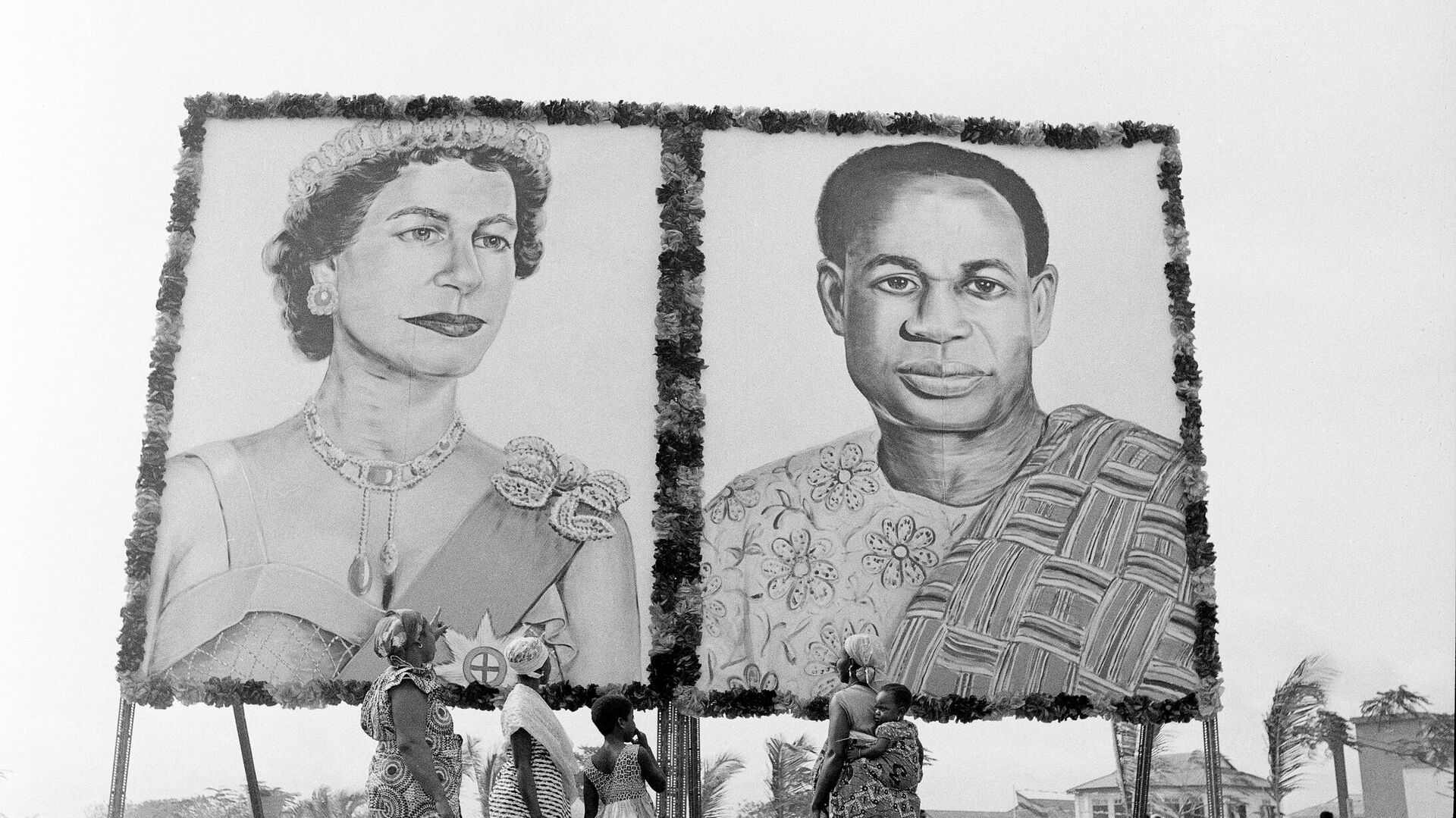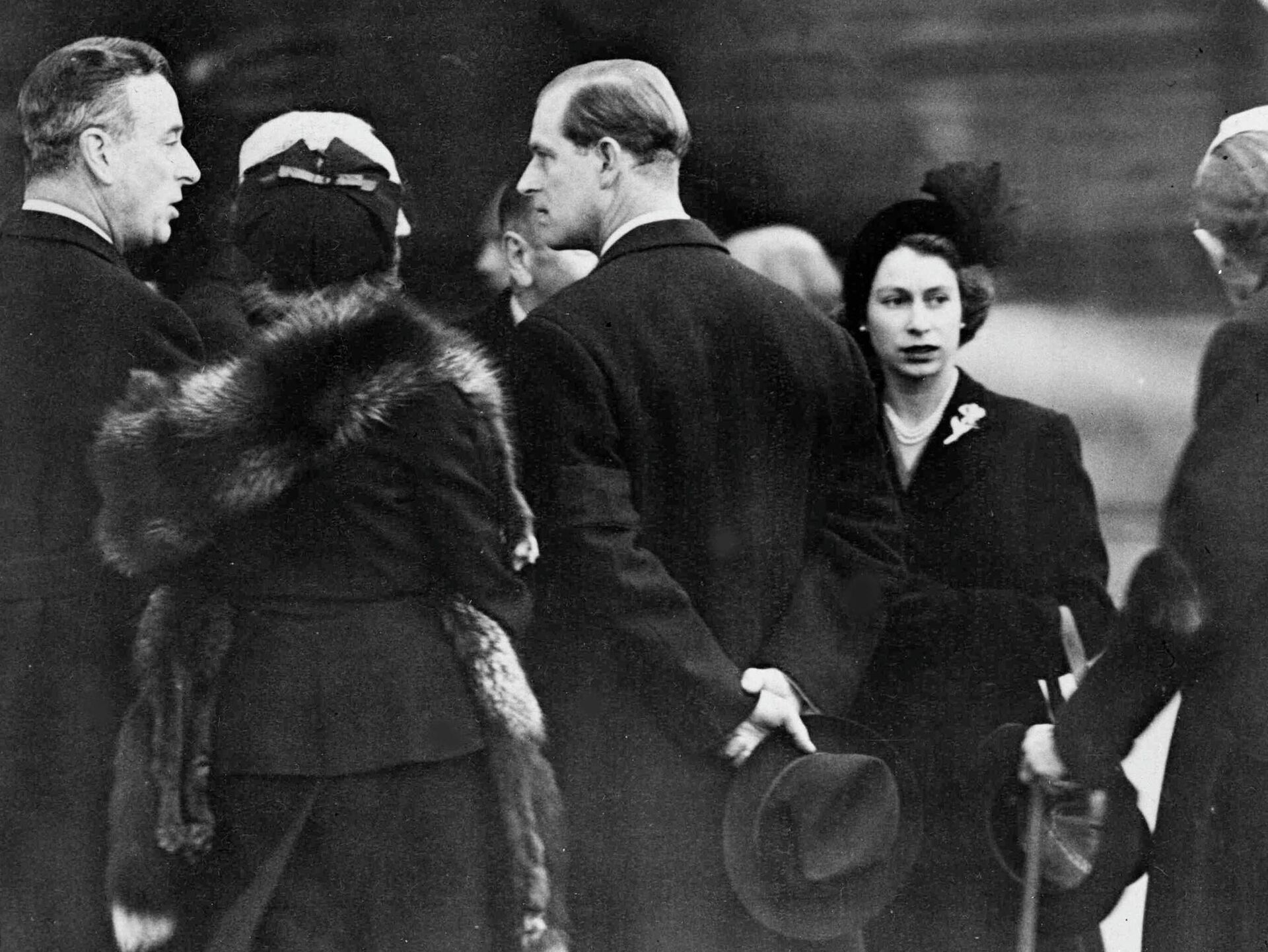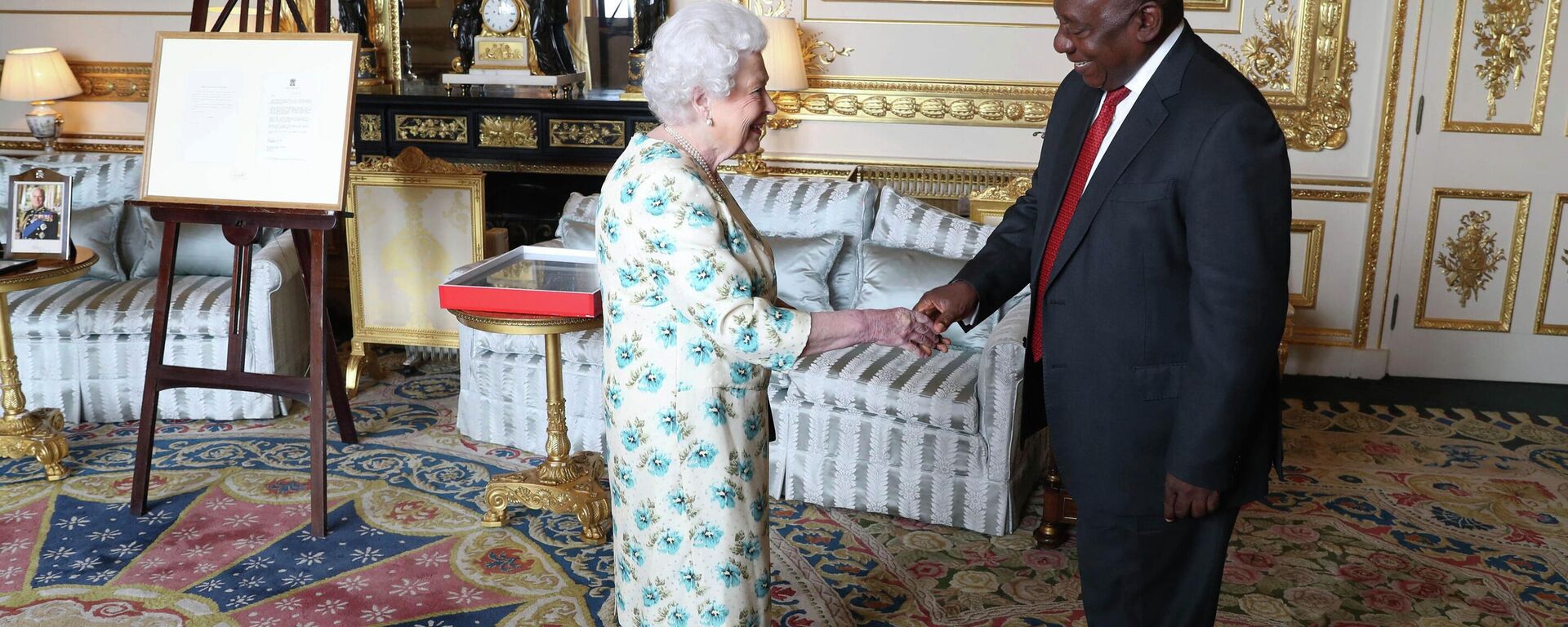Africa My Beginning: Queen Elizabeth II's 70-Year Love Affair With the Continent
00:18 GMT 10.09.2022 (Updated: 11:36 GMT 23.11.2022)

© AP Photo / Associated Press
Subscribe
The late Queen visited every member state of the Commonwealth of Nations except Cameroon and Rwanda, which only joined the organisation in 1995 and 2009 respectively, and this year's new members Gabon and Togo. She visited 28 of the former colonies in the 1960s alone.
The late Queen Elizabeth II was one of the most widely-travelled heads of state in history — but the African continent played a special role in her life.
During her lifetime, the Queen visited 53 nations of the Commonwealth, the association of Britain and most of its former colonies. She also paid state visits to several non-Commonwealth nations during her 70-year reign.
Kenya
The then-Princess Elizabeth was in the East African nation of Kenya — then still a British colony — when she succeeded her father King George VI as monarch on February 6, 1952.

Britain's Queen Elizabeth II, right, and her husband Prince Philip, the Duke of Edinburgh, centre with back to camera, are greeted on their arrival at London Airport, on Feb. 7, 1952. The royal couple cut short their official trip to Kenya and returned home following the death of King George VI. Prince Philip is talking to Earl Louis Mountbatten of Burma, left.
© AP Photo
She and her husband Prince Philip were staying at the Treetops Hotel — literally built in the branches of a tree — in Aberdare National Park when they received the tragic news of the King's sudden death from a heart attack. Elizabeth had been standing in for her ailing father on a trip that was meant to continue to Australia and New Zealand, but was naturally cut short.
South Africa
The Queen first visited South Africa before her reign in 1947 with her parents George VI and Queen Elizabeth (later known as the Queen Mother) and her sister Princess Margaret. The country had not yet become a republic and was a year away from the harshest period of apartheid.
Following the end of apartheid, Elizabeth returned with Prince Philip for a six-day tour in 1995, starting in Cape Town, followed by Port Elizabeth — where she was greeted by a crowd of 100,000 people — then Johannesburg and Pretoria. She was accompanied by President Nelson Mandela to events on five of the six days, and described the trip as "one of the outstanding experiences of my life."
A road bridge in the centre of the financial capital Johannesburg was named after Queen Elizabeth. Nowadays, it meets the Nelson Mandela Bridge at its northern end.
South African President Cyril Ramaphosa recalled on Thursday that he met Elizabeth at the 2018 Commonwealth meeting in London, where they spent some time reading letters that Mandela had sent to the Queen.
"The Queen’s commitment and dedication during her 70 years on the throne remains a noble and virtuous example to the entire world," Ramaphosa said.
Uganda
The Queen's first state visit following her coronation in 1953 was to Uganda, just one stop on her round-the-world tour that spanned two years. She spent a day in Aden, now a province of Yemen, beforehand and then flew on to Libya afterwards.
Coming eight years before Uganda's independence, Elizabeth's trip was greeted by cheering crowds. Always a nature lover, she visited Kazinga National Park — later re-named Queen Elizabeth National Park in her honour.
Ghana and Sierra Leone
Ghana's independence under the leadership of President Kwame Nkrumah in 1957 was a pivotal moment in the wave of post-WWII decolonisation.
That made the Queen's 1961 visit, when she famously danced with Nkrumah, her equal as head of state, all the more significant.

Queen Elizabeth II is partnered by Ghana President Kwame Nkrumah as they dance the popular Ghana rhythmic shuffle known as the "High Life" at a farewell ball given in honor of the Queen and her husband at the state house in Accra, Ghana at night on Saturday, Nov. 18, 1961. (AP Photo)
© AP Photo / Anonymous
There were fears for her safety after bombs exploded in the capital Accra, while Nkrumah was fostering good relations with the Soviet Union and China. "How silly I should look if I was scared to visit Ghana and then Khrushchev went and had a good reception," Elizabeth responded.
The next African port of call for the Royal Yacht Britannia on that tour was Ghana's newly-independent West African neighbour Sierra Leone, where she remained monarch until 1971 when the country became a republic.
Ethiopia and Sudan
The year 1965 saw the Queen and her husband visit Ethiopia, one of Africa's last kingdoms, where she rode through the streets of the capital Addis Ababa with Emperor Haile Selassie in a coach drawn by six white horses. They later dined at the old palace, where the emperor kept his pet lions in the gardens. The royal couple then spent a week touring the country.

Queen Elizabeth II, the first British monarch to visit Ethiopia, arrives with her host, Emperor Haile Selassie, for a State Banquet on the first day of her eight-day visit in Addis Ababa Feb. 1, 1965. Following is the Duke of Edinburgh.
© AP Photo
Like Prince Philip, Selassie had spent five years from 1936 to 1941 in exile in the UK — when Elizabeth was a child — after Benito Mussolini's Italian fascist forces occupied his country. The sight of a black African emperor in newspapers and newsreels led to the birth of the Rastafarian faith in Jamaica, who revered him as a new messiah.
Elizabeth then travelled on to neighbouring Sudan, where she indulged her passion for horse racing in the capital Khartoum, took in an art gallery and then flew out to view a dam on the Blue Nile.
The Seychelles and Mauritius
Elizabeth and Philip ventured out into the Indian Ocean in 1972 to visit two small island nations of Africa where she was still head of state. She officially opened the Seychelles International Airport on the largest island Mahé, and met a 75-year-old giant turtle.
In Mauritius, the couple was met in the capital Port Louis by a crowd of some 250,000 people. She opened the sixth session of the third Mauritian parliament before flying to Nairobi in Kenya.
Tanzania, Malawi, Botswana and Zambia
The British monarch undertook a grand tour of southern Africa in 1979, visiting four countries in a matter of weeks. On her first stop, she was greeted by Tanzanian President Julius Nyerere and visited Arusha, Dar es Salaam, Zanzibar, and Mount Kilimanjaro on the border with Kenya.
In Malawi, the Queen attended several functions with President Hastings Banda, bedecked in a diamond tiara and other precious jewellery. In Botswana, she was accompanied by Prince Phillip and a youthful Prince Andrew.
On the final leg of the tour, the royal party flew over the spectacular Victoria Falls near Livingstone. Security was light at the airport, despite fears over guerrilla activity in the country, and the crowd broke through the cordon to surround the Queen, singing and dancing.
Tunisia, Algeria and Morocco
Elizabeth made her only trip to North Africa in October 1980. After a brief stop in Tunisia, her three days in Algiers were mostly taken up with meeting victims and survivors of the El Asnam earthquake two weeks earlier. She travelled on to Morocco, visiting the ancient citadels of Marrakech and Casablanca and the capital Rabat.
Zimbabwe and Namibia
Elizabeth visited two of Africa's newest free nations in 1991. Zimbabwe, which had won independence and majority rule in 1980 after years of guerrilla warfare, was hosting the Commonwealth Heads of Government Meeting. Elizabeth had first visited the country, then known as Rhodesia, in 1947 on the same tour that included South Africa.

Britain's Queen Elizabeth II joins in a toast with President Robert Mugabe of Zimbabwe, during a banquet in the Queen's honor in Harare, Zimbabwe on Oct. 10, 1991, during her first visit since 1947.
© AP Photo / Allen
In 1991, the country was suffering from a drought, but the royal visit coincided with rain and some citizens asked the Queen to stay for continued good luck. "I pray that the drought may end soon and that you have ample rain in the coming year," she said before leaving — to no avail as the drought continued into 1992.
Namibia had only won independence from South Africa in 1990 — part of a chain of historical events that led to the end of apartheid — and had opted to remain within the Commonwealth. The Queen and Prince Philip were welcomed to the capital Windhoek by new President Sam Nujoma, before visiting Ondangwa near the Etosha National Park.
Mozambique
Queen Elizabeth's final African trip of the 20th Century was in 1999 to Mozambique, a former Portuguese colony that had joined the Commonwealth four years earlier. Compared to earlier visits to the continent, it was a major anti-climax.
The royal was only in the country for 12 hours, and just 14 people turned up to see her at the city hall in the capital Maputo.



